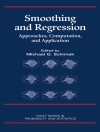This book offers a unique new look at the familiar quantification theory from the point of view of mathematical symmetry and spatial symmetry. Symmetry exists in many aspects of our life—for instance, in the arts and biology as an ingredient of beauty and equilibrium, and more importantly, for data analysis as an indispensable representation of functional optimality. This unique focus on symmetry clarifies the objectives of quantification theory and the demarcation of quantification space, something that has never caught the attention of researchers.
Mathematical symmetry is well known, as can be inferred from Hirschfeld’s simultaneous linear regressions, but spatial symmetry has not been discussed before, except for what one may infer from Nishisato’s dual scaling. The focus on symmetry here clarifies the demarcation of quantification analysis and makes it easier to understand such a perennial problem as that of joint graphical display in quantification theory. The new framework will help advance the frontier of further developments of quantification theory.
Many numerical examples are included to clarify the details of quantification theory, with a focus on symmetry as its operational principle. In this way, the book is useful not only for graduate students but also for researchers in diverse areas of data analysis.İçerik tablosu
Optimality and Symmetry.- Examples of Quantification.- Constraints on Quantification.- Quantification Procedures.- Mathematical Symmetry.- Data Format and Information.- Space Theory and Symmetry.
Yazar hakkında
Shizuhiko Nishisato, Professor Emeritus, University of Toronto.












